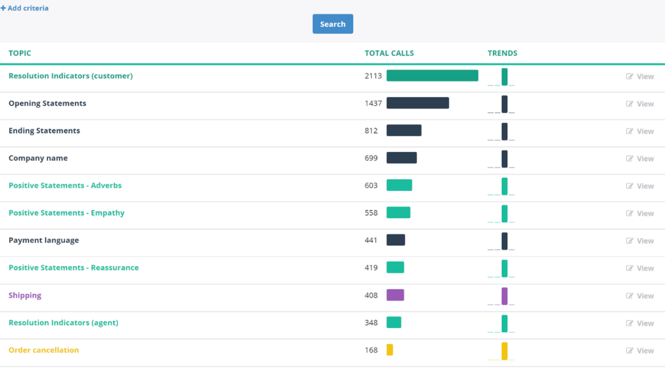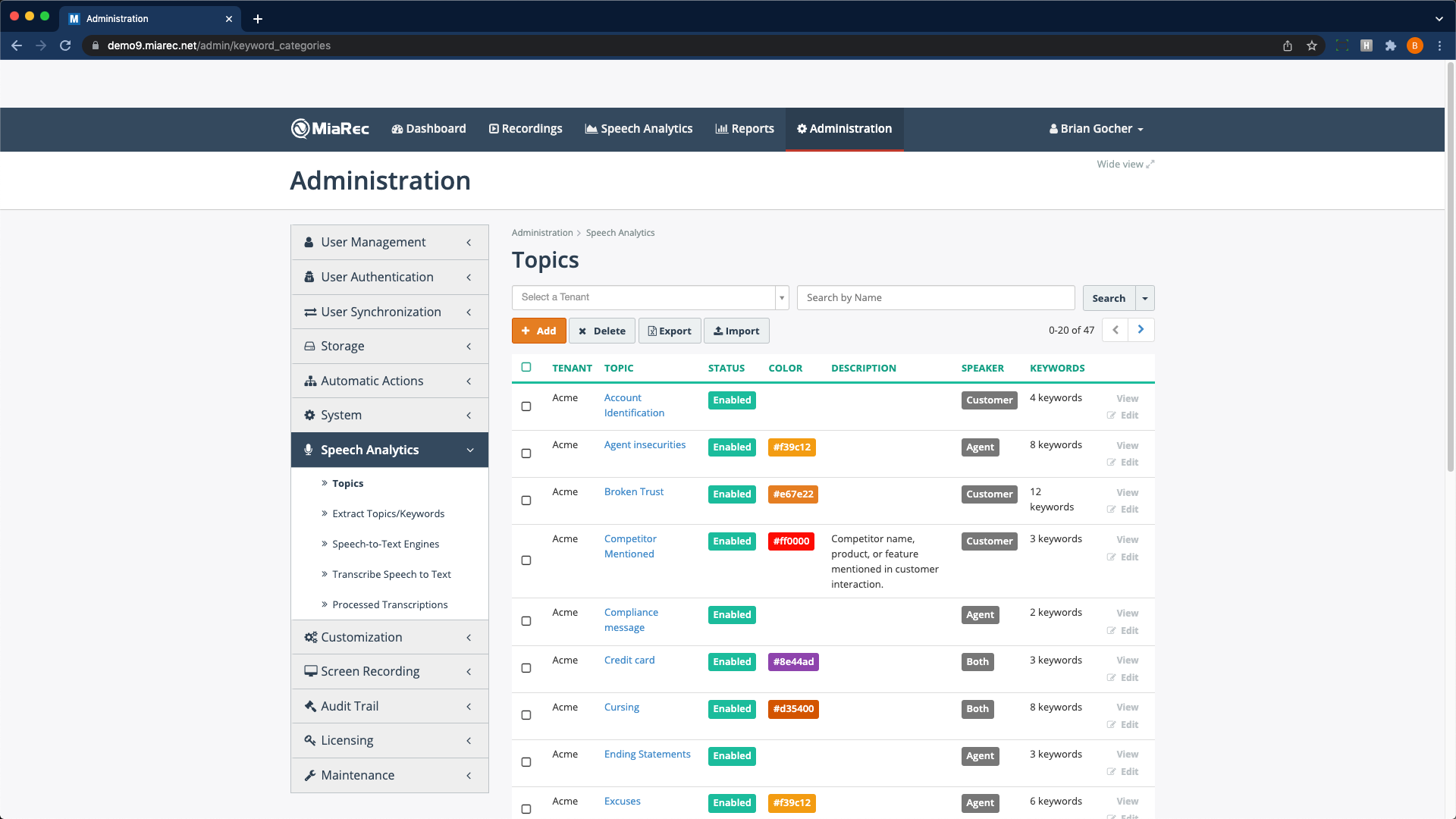Why Your Analytics Don’t Provide Visibility (And How to Fix It)
We’re drawing analytics from every source we can. Click sensors give us heat maps of website activity. Keyloggers tell us when people change their minds at the point of sale. We use machine learning and AI to scour through surveys, analyze call recording transcripts, predict buying habit patterns and so on. The promise of analytics is colossal, but is it delivering on that promise?
Businesses Aren’t Seeing Relevant Data
A 2015 Gartner study estimated a 60% failure rate in big data projects over the 2 years that followed. In the final analysis, 60% was “too conservative” according to Gartner’s Nick Heudecker. Large organizations ultimately experienced a near 85% failure rate. That means the promise of analytics to bestow relevant and actionable data missed the mark most of the time.
And in 2022, the onslaught of analytics-ready business products has only grown. Is AI, machine learning, and analytics just a bill of goods that bulks up a sales deck for every new product, or are we perhaps just failing to properly use a potentially brilliant idea?
Analytics Are Good, Why Are They Failing?
Why are all our analytics platforms failing to connect our dots? The problem is not one of collecting data, but rather of organizing. Take for instance analyzing call recordings for keyword analysis. All too often analytics are sold as some kind of automatic to light that will reveal the inner workings of your company and your customer.
However, assuming that analytics are in any way automatic is the same as assuming a biographer you just hired can write all about you while knowing nothing in particular about you. Analytics require personalized involvement from any company looking to successfully use them. To extract relevant information, you need to know what things to discard, what things to focus on, and how to apply weights and values.
Humans Are The Intelligence Benchmark
Analytics fail because they're dehumanized. Human beings constantly make value assessments, savoring crucial information and discarding unnecessary learnings. Instinctively, when you walk into a crowded party, your mind goes to work setting goals (finding familiar people), marking waypoints (food table location), noting concerns (the drunk dance floor), and filtering audio (conversations, music, etc.).
Our senses are constantly recording everything going on around us, but our mind knows what to discard and what to savor in order to make intelligent decisions. Currently, the problem with our analytics is that they behave like senses that are attached to a passive mind. Despite our constant affirmation the human beings do stupid things (see the Darwin Awards), we make hundreds of billions of informed and intelligent decisions as a species, and we do it elegantly. AI driven Analytics, however, do not work so smoothly unless we take an active role in designing them.
Analytics Are Dumb… At First
Your management team knows what your business problems and goals are. Your analytics platform doesn’t know that you’re fighting a churn issue, much less why. How can a piece of software know you’re trying to get actionable numbers about your sales staff. How can analytics know you want salesfolk to consistently attempt upsells, or evangelize for a new service you offer?
The disconnect, put simply, is that analytics are seldom designed intelligently around business goals. Many analytics packages are able to spit out automated numbers about various events they’re designed to track. Most frames you buy come with prefabricated family pictures in them that have the same usefulness those pre-designed analytics have. Both frames and analytics algorithms need personalized input to have value.
Social Media Is The Relevant Data Benchmark
Social media algorithms have provided rich and proven data about spending habits, cultural interests, politics, and a host of other issues. The difference between business analytics and social media algorithms is that social media giants have built analytics into their applications from the start. As a business model, social media doesn’t exist without relevant statistics.
Just as advertisers used to rely on Nielson ratings to decide when and where to advertise, social media analytics provide increasingly accurate customer intel. Right now, DataSift puts overall social media sentiment analysis accuracy at 70%. Is it perfect? No. Is it effectively bringing money to companies advertising on social media? Just scroll your feed and try to not see advertisers. The model is a clear success.
How To Make Analytics Work For Us
There are so many analytics platforms, but for the sake of relevance, let's concentrate on one that has the potential to deliver the motherload of actionable intelligence, call recordings. Every customer that calls your company should be considered deeply honest. This is because they've called you, and they either want to buy something, ask a question, or hurl complaints. None of these actions require or benefit from lying.
End like a diligent company does, you've recorded your call, stored it away, had it transcribed, and if you're smart you have an analytics platform spotting keywords in your calls. This keyword spotting is a deeply personal and unique process for every company, because this is the difference between a passive and an active brain. Direct interaction with your analytics platform to tell it what you're looking for is required, just as your brain set goals and waypoints in that party scenario.
The reason that there was an 85% failure in Big Data projects across large businesses, and this is an educated guess, is because loads of data was collected, but values were not properly attached to the collection process. This means there was no way to properly visualize the information, and therefore no way to derive business value from it.

Analytics Must Deliver Visibility
Visibility is the objective of deploying analytics. We want to know how our customers feel about us, how our service folk are treating the customers, and how well they know the company’s offerings. The data must be honest, and it must be organized into a result that we can make decisions on. The data must be presented in a human-accessible form. Percentages, pie-charts, and graphs are only as good as the subject they address.
Steps 1: Everybody Chime In
Every company can look at the problems and successes they’ve had in the past to humanize their data organization. This would start with a keyword list, which is only effective when there’s some company collaboration.
Your agents and your quality managers know what phrases indicate a call that is going poorly, just as well as the words surrounding a good call. They should supply that vocabulary to your keyword list.
Your CEO and product managers should know what new products and services your customers will be calling you about. They also know the names of your competitors, as well as their products and services. They should be adding that vocabulary to your keyword list.
Your accounts department knows the speech your customers use when they are comparing prices, plans, complaining about billing problems, looking to upgrade or cancel. Get their input about they keyword list.
Support agents are always well aware of the words customers use to describe the problems they have with your products and services. Their keyword input will deliver great visibility about the functionality of your products.
This all hands on deck “keyword chime-in” is the first step to benefitting from your call recording analytics.
Step 2: Focus In, Filter Out
The data you see reported to you from your analytics platform is highly customizable. Now that you have an organization system called your keyword list, decide what those words add up to. The process here isn't the same for every company, but let's take what approach that works universally to get started. Let's spot trends in our keyword volume.
A good analytics platform will allow you to see which keywords and phrases are being uttered the most frequently in your call recordings. These trends can be viewed across days, weeks, years and so on. Seeing the phrase “cancel my subscription” ticking up in your call volume is cause for concern in any company, and here's where analytics spring to life.
Analytics allow us to match the cancellation language to other keywords that point to the reason for the cancellations.
Your analytics engine should allow you to search for that cancellation language and other words linked to subscription loss. This could be cost language, (“costs too much”, not worth the money”), or competitor product names. It could be language centered product use issues (“can’t get it to work”, “confusing”, “hard to use”).
When you see the language associated with your cancellations, you can make an informed decision, and you can do so in record time. The strength of analytics isn't automatically finding the data that we want,. the strength of Analytics is that it turns you into a position with an x-ray machine, allowing you to see the entire body of information at once, but with the focus on what's important.
Reframe Analytics
Have analytics hit a reality wall? Yes, thank goodness. The excitement for AI-powered analytics has peaked and that means we’re seeing clearly now. AI is a misleading term, because the defining trait of intelligence is want, and AI doesn’t want anything for itself. You and your company are the key wanters in this scenario. You’re the actual intelligent beings that can connect your analytics to your business goals.
This means being choosy about what your analytics you want reported, re-angling what words and activities you monitor. Successfully getting data from your analytics means you must be the mediator between analytics and the customer data you want to track. Does this sully the shine of analytics? No, it just through the frivolous marketing analytics are sold with and declares that you can still receive competitive intelligence from analytics when you humanize the data.
Learn more about the benefits of speech analytics by downloading our latest white paper below.
You May Also Like
These Related Stories
-3.png)
Maximize the ROI of Contact Center Voice Analytics: Top 5 Use Cases
-1.png)
How Healthcare Contact Centers Can Adopt Voice Analytics Solutions (Without Violating Compliance)



